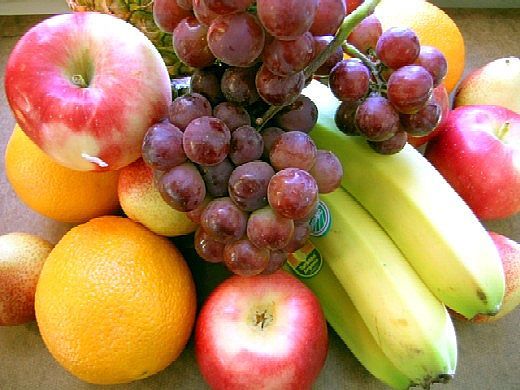When I was
in high school, a friend of mine did a homestay in Chile. She told me that she absolutely
fell in love with the fruit. It was so much fresher than what we can get in the
grocery stores, far more succulent. And there were all kinds of fruit that we
don’t normally have access to either.
Her host mom knew that she liked a certain kind of fruit so much – which
one, I don’t remember; we graduated a bajillion years ago – that she secretly
packed some in my friend’s suitcase to take back to the States so she could
enjoy it when she got home – a surprise, so to speak. So when customs officials
riffled through her suitcase and found the forbidden fruits, they certainly
gave her a rough time, thinking she was some kind of exotic fruit smuggler.
Needless to say, she was certainly surprised. (My customs official was much
nicer coming back from Brazil – he saw I was heading back to Indianapolis and
caught me up on the last few Colts games, scores and all.)
Chile is a
long, skinny country on the Pacific side of South America, bordering Argentina,
Bolivia, and Peru. (And one of two countries in South America that DOESN’T
border Brazil.) It also includes a
few islands, most notably Easter Island. Easter Island is known for the giant
somewhat-square-looking stone-carved heads; or as my kids call it: Squidward’s
house. It also contains Robinson Crusoe Island – Alexander Selkirk was stranded
here as a castaway in 1704, where he lived in solitude for over four years.
Inspired from this story, Daniel Defoe published Robinson Crusoe about 15 years
later. The country is 2700 miles long and only 217 miles wide at its widest
point. To travel from north to south is almost the same distance between
Indianapolis, IN and Quito, Ecuador. And because it’s so long, the climate and
landscape varies drastically. The
north contains the Atacama Desert, one of the driest places on Earth. The
southern areas are covered in jagged islands and fjords and claims to lands in
Antarctica, although these claims are not recognized by all countries. Because
Chile lies in the Pacific Rim of Fire, it has several active volcanoes and is
subject to earthquakes and tsunamis. Not to mention that the Andes Mountains
wind its way down the west side of South America, dividing Chile and Argentina.
(Ironically, Andes mints has nothing to do with the Andes. It was created by a
Chicago candy company, and originally named Andy’s mints after the owner. But
people thought it was creepy to give candy with a man’s name on it, so he
changed it to Andes mints. The End.)
This area
has been inhabited for about 10,000 years. The Mapuche are distinguished from
others for resisting assimilation into the Incan Empire. The first European to
set foot on what is now Chile was none other than Ferdinand Magellan in 1520
(the namesake of the Strait of Magellan), and of course others followed. Spanish
explorers landed there in search of silver and gold, and although they didn’t
find any, they just claimed the entire place for Spain. (Sounds like “gold and
silver” was their version of “WMDs”, huh?) It would remain that way until –
several wars and skirmishes later – they would declare their independence from
Spain in 1818.
The capital
and largest city in Chile is Santiago. Although this is the official capital of
the country, where the executive and judicial offices are held, their Congress
actually convenes in nearby Valparaíso (pronounced vahl-pah-rah-EE-so, as
opposed to the city in northern Indiana, val-puh-RAY-zo).
Because
the country was controlled by the Spanish for a couple of centuries, the
established language is obviously Spanish, and like most other Spanish-speaking
countries, most Chileans (about 70%) identify themselves as Roman Catholic.
Chile is
one of the more economically stable countries in South America. One of the
things that Chile is famous for – besides fruit – is wine. And I’m really
excited about this. They aren’t far from the Mendoza region of Argentina which
produces from very good wines (I just had a malbec from Mendoza a few weeks
ago, very good.). I’m excited for the food; I think it may stretch my family’s
tastes though. I have a feeling that there is a lot more than meets the eye to
this long, skinny country – unless you’re coming in from the Pacific, then it’s
short and fat. I think it’s all in perspective.
Up next:
holidays and celebrations


.jpg/220px-A_family_of_Araucauians_(Chile).jpg)


No comments:
Post a Comment